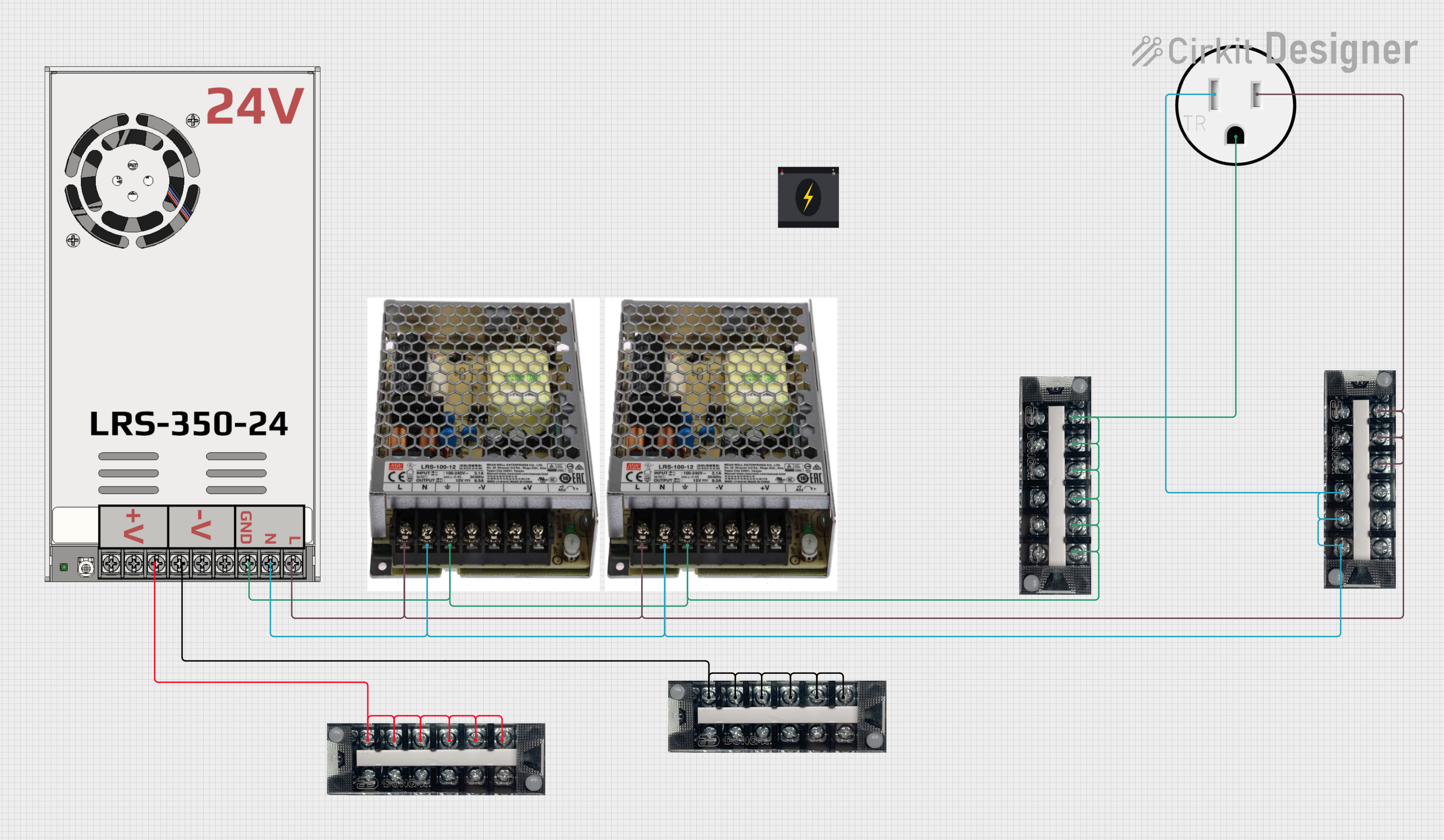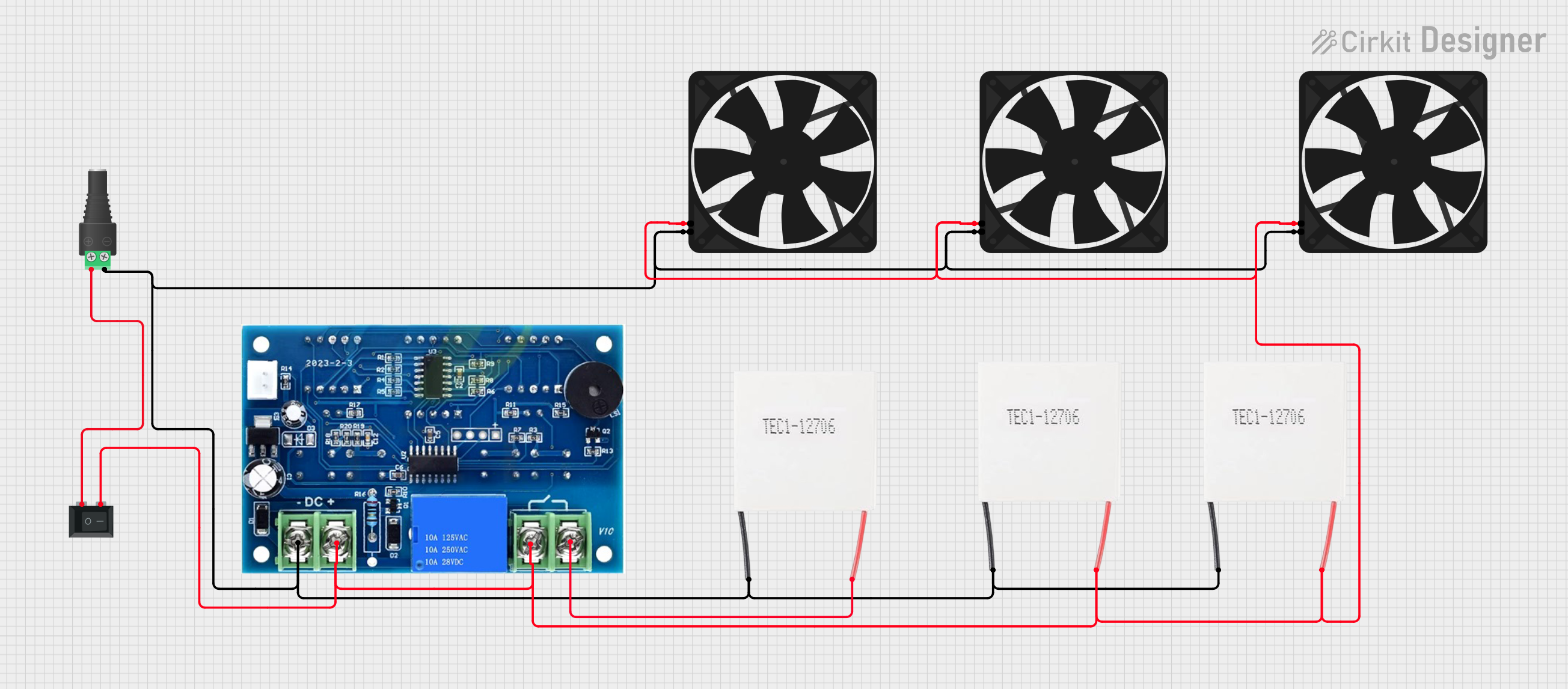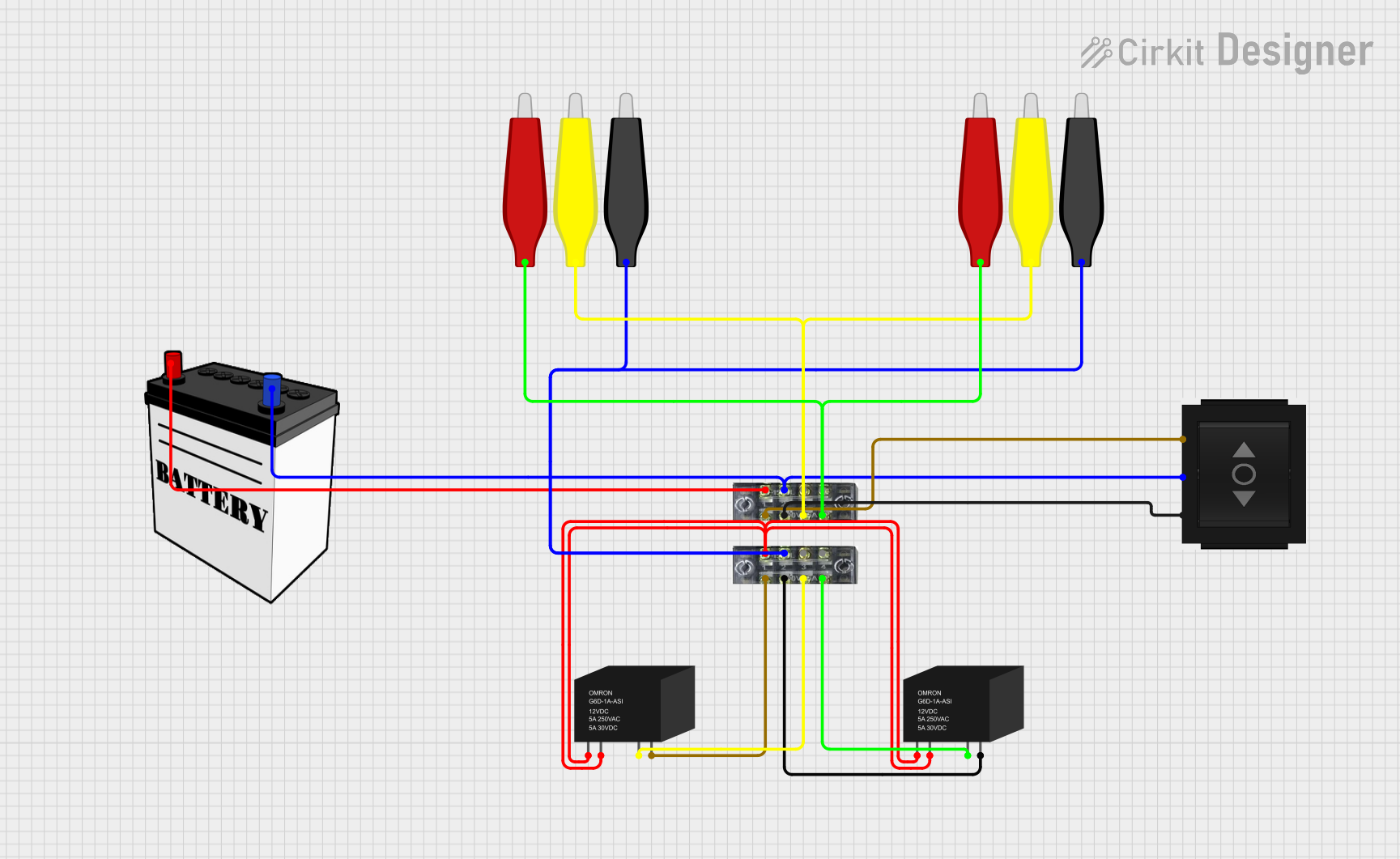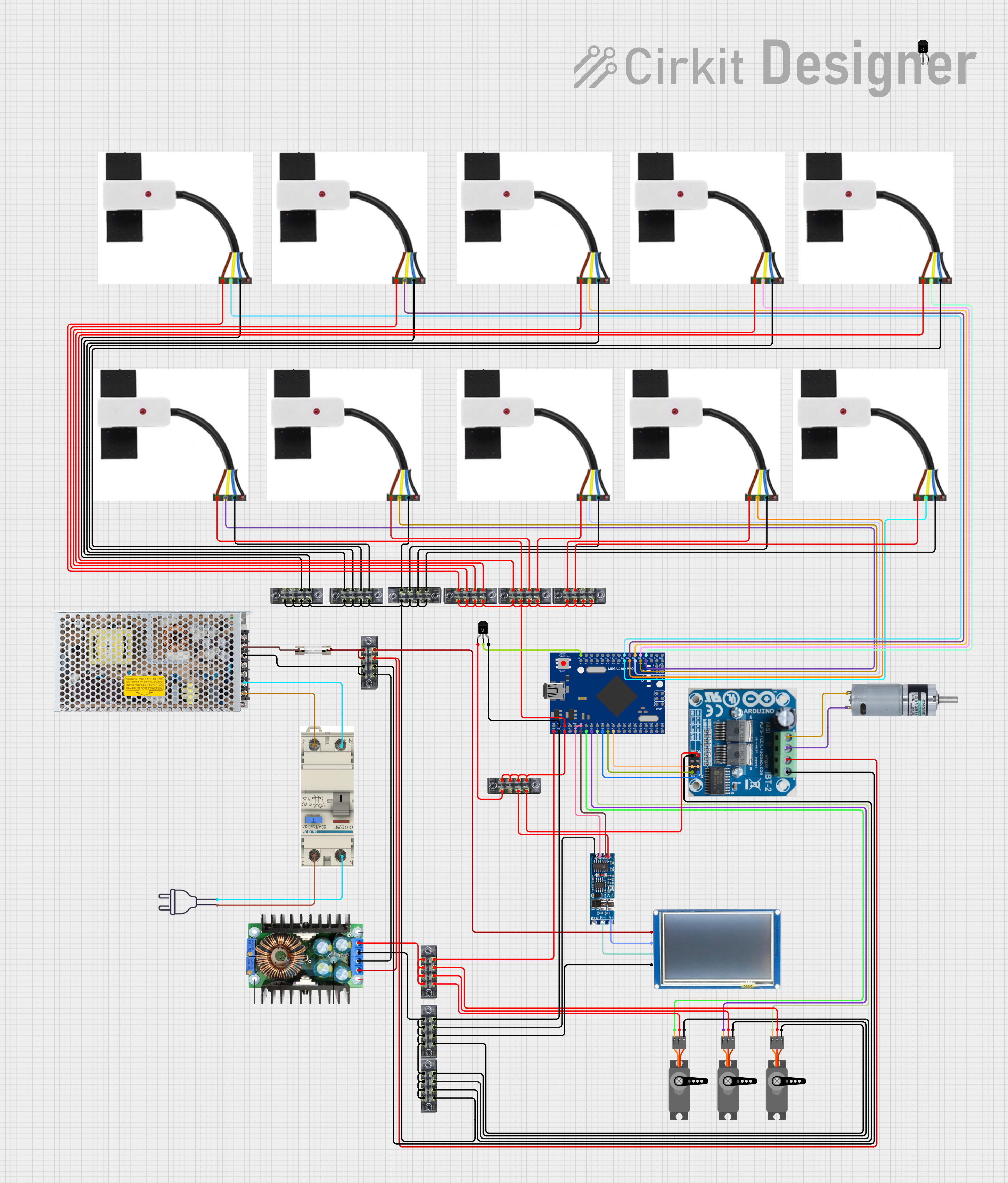
How to Use terminalblock-04-01: Examples, Pinouts, and Specs

 Design with terminalblock-04-01 in Cirkit Designer
Design with terminalblock-04-01 in Cirkit DesignerIntroduction
A terminal block, also known as a terminal connector or connection block, is a modular block with an insulated frame that secures two or more wires together. The TerminalBlock-04-01 is a specific model of terminal block that is designed to facilitate easy wiring connections in a variety of electronic and electrical systems. This component is commonly used in industrial control systems, power supply units, consumer electronics, and DIY projects, including those involving Arduino boards.
Explore Projects Built with terminalblock-04-01

 Open Project in Cirkit Designer
Open Project in Cirkit Designer
 Open Project in Cirkit Designer
Open Project in Cirkit Designer
 Open Project in Cirkit Designer
Open Project in Cirkit Designer
 Open Project in Cirkit Designer
Open Project in Cirkit DesignerExplore Projects Built with terminalblock-04-01

 Open Project in Cirkit Designer
Open Project in Cirkit Designer
 Open Project in Cirkit Designer
Open Project in Cirkit Designer
 Open Project in Cirkit Designer
Open Project in Cirkit Designer
 Open Project in Cirkit Designer
Open Project in Cirkit DesignerTechnical Specifications
General Specifications
- Type: Screw-type terminal block
- Number of Positions: 4
- Pitch: 5.08mm
- Wire Gauge Range: 26-16 AWG
- Rated Voltage: 300V
- Rated Current: 16A
- Withstanding Voltage: 2000V AC/minute
- Operating Temperature Range: -40°C to +105°C
- Material: Polyamide 66, UL94V-0 flame retardant
- Terminal Material: Brass, Nickel plated
- Screw Material: Steel, Zinc plated
Pin Configuration and Descriptions
| Pin Number | Description |
|---|---|
| 1 | Wire connection 1 |
| 2 | Wire connection 2 |
| 3 | Wire connection 3 |
| 4 | Wire connection 4 |
Each pin corresponds to a separate wire connection point within the terminal block. The screws on the terminal block can be tightened or loosened to secure or release the wire.
Usage Instructions
Wiring the Terminal Block
- Strip the Wire: Strip approximately 5-7mm of insulation from the end of each wire that will be inserted into the terminal block.
- Insert the Wire: Loosen the screws on the terminal block and insert the stripped end of the wire into the corresponding hole.
- Secure the Wire: Tighten the screw to ensure a secure and reliable electrical connection. Do not over-tighten as this may damage the wire or the terminal block.
- Repeat for Other Wires: Repeat the process for each wire, ensuring that each one is securely connected to its respective position in the terminal block.
Best Practices
- Ensure that the power is turned off before making connections to the terminal block.
- Use wires that are within the specified gauge range to ensure a secure fit and reliable connection.
- Periodically check the connections for any signs of corrosion or loosening.
- Do not exceed the voltage and current ratings to prevent damage or potential hazards.
Troubleshooting and FAQs
Common Issues
- Loose Connections: If a wire is not securely fastened, it may cause intermittent connections or power loss. Tighten the screw to secure the wire.
- Stripped Screws: Over-tightening can strip the screws, making it difficult to secure the wires. If this happens, the terminal block may need to be replaced.
- Overheating: If the terminal block is overheating, it may be due to exceeding the current rating or a loose connection. Check the current load and connections.
FAQs
Q: Can I use this terminal block with an Arduino UNO? A: Yes, the TerminalBlock-04-01 can be used to make secure connections between the Arduino UNO and other components or external circuits.
Q: What should I do if the terminal block is not holding the wire securely? A: Ensure that the wire is stripped to the correct length and that the screw is tightened adequately. If the problem persists, check if the wire gauge is within the specified range.
Q: Is it possible to connect two wires to one terminal? A: While it is possible to connect two wires to one terminal, it is not recommended as it may not provide a secure connection. It is better to use one wire per terminal.
For Arduino UNO users, here is a simple example of how to connect an LED using the TerminalBlock-04-01:
// Define the Arduino pin connected to the LED through the terminal block
const int ledPin = 13;
void setup() {
// Set the LED pin as an output
pinMode(ledPin, OUTPUT);
}
void loop() {
// Turn the LED on
digitalWrite(ledPin, HIGH);
delay(1000); // Wait for 1 second
// Turn the LED off
digitalWrite(ledPin, LOW);
delay(1000); // Wait for 1 second
}
In this example, the anode of the LED would be connected to pin 13 of the Arduino UNO, and the cathode would be connected to the ground, both through the terminal block for a secure connection. Remember to include a current-limiting resistor in series with the LED to prevent damage.